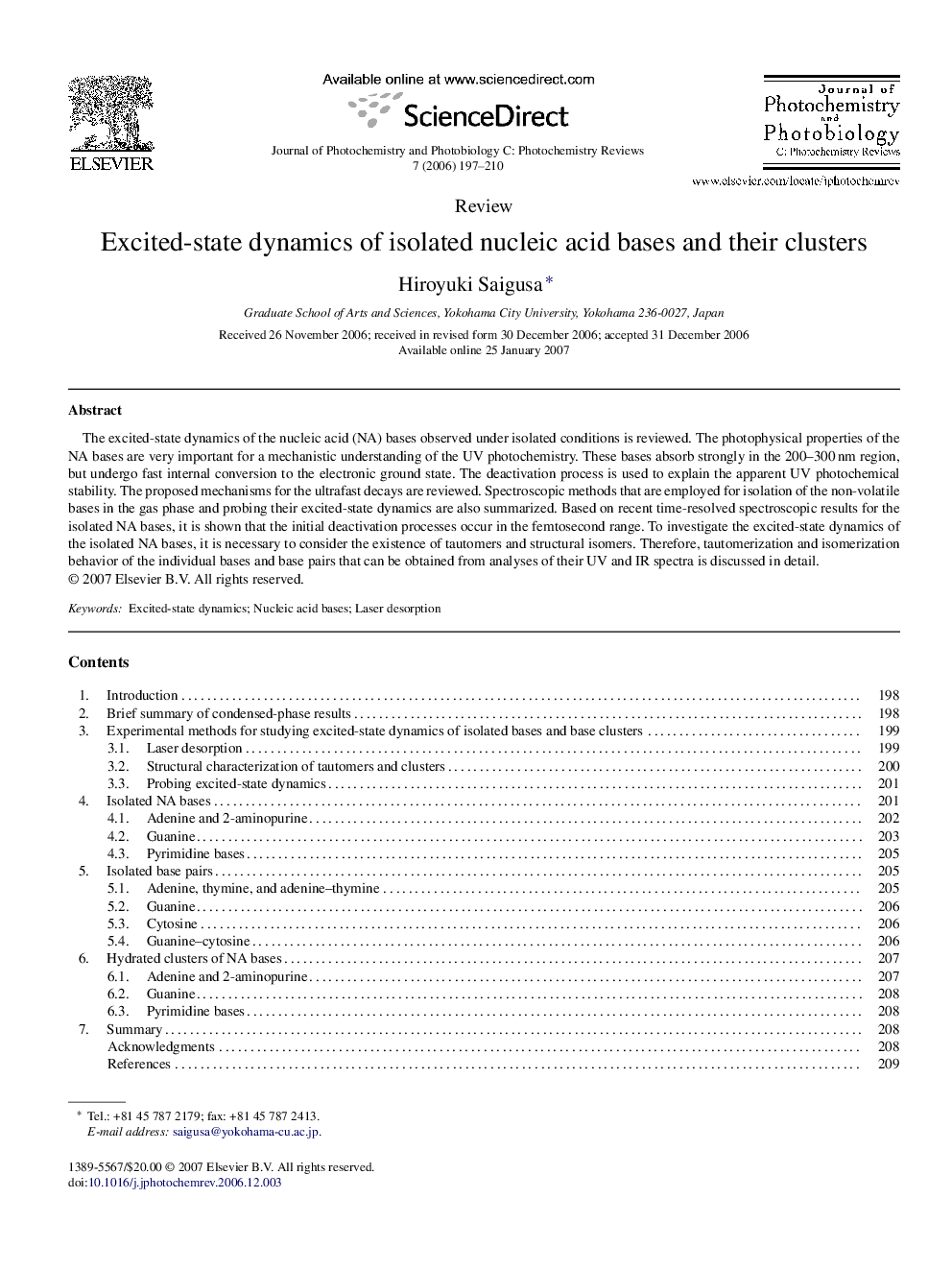| Article ID | Journal | Published Year | Pages | File Type |
|---|---|---|---|---|
| 31421 | Journal of Photochemistry and Photobiology C: Photochemistry Reviews | 2006 | 14 Pages |
The excited-state dynamics of the nucleic acid (NA) bases observed under isolated conditions is reviewed. The photophysical properties of the NA bases are very important for a mechanistic understanding of the UV photochemistry. These bases absorb strongly in the 200–300 nm region, but undergo fast internal conversion to the electronic ground state. The deactivation process is used to explain the apparent UV photochemical stability. The proposed mechanisms for the ultrafast decays are reviewed. Spectroscopic methods that are employed for isolation of the non-volatile bases in the gas phase and probing their excited-state dynamics are also summarized. Based on recent time-resolved spectroscopic results for the isolated NA bases, it is shown that the initial deactivation processes occur in the femtosecond range. To investigate the excited-state dynamics of the isolated NA bases, it is necessary to consider the existence of tautomers and structural isomers. Therefore, tautomerization and isomerization behavior of the individual bases and base pairs that can be obtained from analyses of their UV and IR spectra is discussed in detail.
